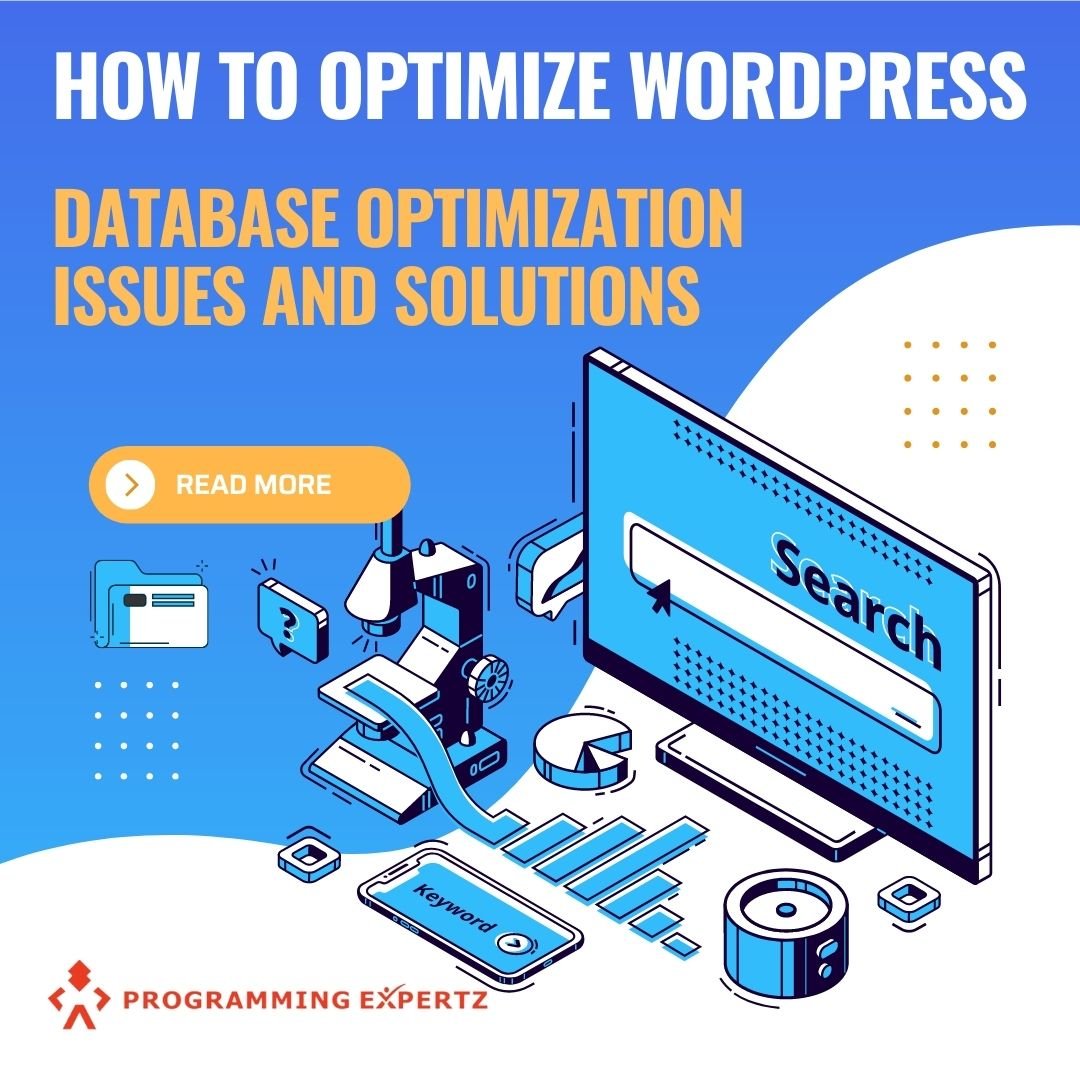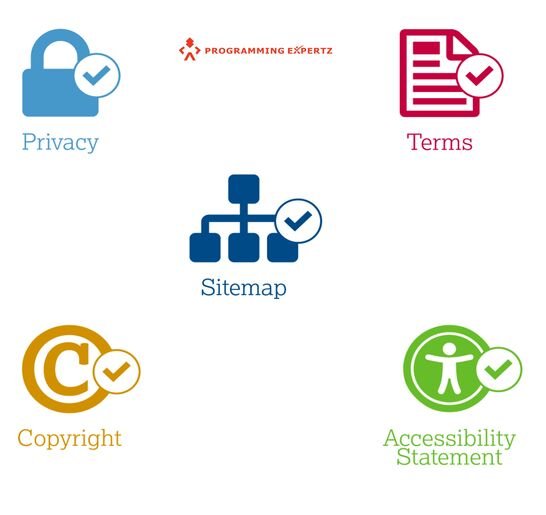You can find helpful information about WordPress optimization and database optimization problems in the article that follows. On a website hosted by WordPress, there’s a significant probability that most of the editable material you can see is kept in the underlying relational SQL database. It includes your username and password, posts, pages, category lists, store items, and category lists. The use of a data model, the volume of data kept, and the supporting infrastructure affect how quickly this data can be retrieved, added, or updated. Data from external sources, such as third-party services accessed via API, may make up a portion of the data. We typically do not influence how remote data sources respond to our requests.
Fortunately, we have some control over data operations that use the database that houses our priceless content management system, so we can work to improve database speed. We’ll concentrate on this layer in this essay. What the WordPress database is used for, its restrictions, and how to work around them while optimizing the database.
Using WordPress data
A few tables make up the default database structure for WordPress, which is essentially used for every request on frontend and backend sites. All types of material, including complicated page designs, articles, media library images, category lists, editable configuration settings, and even temporary data, can be stored by default in these tables.
WordPress authors did a good job optimizing resource usage and designing tables to hold unlimited data, no matter the data type or structure. Personal blogs, landing pages, or tiny shops (with a few products) can operate without issue on these all-purpose tables. Processing large numbers of entries, particularly posts, the general-purpose WordPress containers for all types of data, can be problematic.
Unique Entity
WordPress allows developers to save any custom entity as a post, an object with a unique identifier, name, content, date of creation/modification, and associated with a specific user. This feature is crucial for a database administrator. There are other qualities as well, but for now, let’s concentrate on postings in general. Additionally, these entities can have several metadata entries with both scalar and non-scalar data types.
A post’s associated meta entries function as key-value pairs. In reality, manipulating things like posts and adding a set of meta parameters to them is beneficial. In PHP, built-in functions make reading and writing data more accessible. This global post-oriented strategy is the simplest and quickest technique to store and retrieve data from the database server. For every database administrator’s ease, some plugins add this capability right to the WordPress admin panel.
WordPress data structures
The following categories of data can be distinguished as being processed by WordPress itself, a plugin, or an addition to an already-existing plugin:
- Domain data: Pages, articles, products, orders, and other types of objects with properties displayed in posts and other entities. Taxonomies are features that can be added to anything (e.g., tags, categories, countries, currencies),
- User information: End users provide information such as remarks and responses in connection to domain entities,
- Global settings: Go to choices for website configuration, plugin licencing information, and internal environments.
- User settings: One can utilize user configuration options to alter how the website looks and how various functions behave.
- temporary info: Volatile data acquired during the request processing, typically only valid for a brief period,
- logs –additional data gathered for research or as historical documents
- Others-Binary data, such as media files, is frequently saved in databases as files rather than records.
WordPress makes it simple to handle settings and temporary data. Logs can be kept in separate tables or files or sent via an API to external services. Taxonomies in WordPress are managed and stored very similarly to posts. They are known as terms and can also include meta parameters, which are often confined to a single entry and have simple properties (like categories). However, due to the specified requirements, size of individual entities, and relations, the domain data is the one that requires special consideration.
WordPress database scalability problems: optimization
WordPress is used to represent any form of entity. By building up a website and using posts to accomplish everything, we achieve the following results:
- Storing static content in the exact location as dynamic content; frequently fetched data is located in the table that’s constantly growing dynamic data; for example, page templates are stored alongside shop orders.
- Storing obsolete content in the exact location as valuable content; trashed posts are stored in the same table as every other entity;
- Orphaned metadata left by interrupted processes-some posts may get deleted and gone without a trace.
The performance of plugins like Advanced Custom Fields, which add extra metadata to current posts, may suffer from having everything in one spot. There may be matching meta records that clog the standard database table and harm database performance depending on the number of custom fields saved for each particular post.
Multisite capability
The multisite functionality is one out-of-the-box option for dispersing data over numerous locations, depending on a company’s strategy. Your installation can be changed to a multisite setting. The material will then be divided into distinct spaces, and each site’s tables will have a different prefix so that postings and meta entries from one place won’t conflict with those from another. Designing a custom table schema and implementing distinct read and write logic is the best way to reduce the risk of having too much data in one location. The first choice that needs to be made before beginning any new project with a custom plugin should be this.
When your project is still on paper, pose these questions to yourself:
- Will the SQL database contain any static content commonly used to respond to requests?
- Are administrators and end users expected to produce any additional data?
- Will it be necessary to search for the data that the plugin’s code has added?
- Are custom properties going to be added to WordPress posts?
If any questions above have a “yes” response, you should consider handling your data in custom tables. It could appear to be overkill initially, but as time and megabytes of the data pass, it will reveal its true power. Adding indexes is another necessary step for improving query performance, but we’ll get to that later.
The initial stage of WordPress database optimization is the custom database schema.
Designing the domain data model should be the first action to begin any project. Each entity needs to be specified in terms of its relationships to other entities and its data definition. The post-oriented design of WordPress enables developers to forego worrying about data types and instead concentrate on business logic. On the other hand, this data definition process should be part of any solution (based on specific tables and a custom model). Data validation and suitable types of attribute exchange between functions or modules are made possible by clearly defined data types. Furthermore, carefully selected data types can enhance the read and write operation query performance in the underlying database.
Database performance on specific qualities depends on actual demands for data search criteria to optimize WordPress database performance. When properly constructed and used, indexes can speed up queries, but if too many of them, they can also slow down DML commands (Data Manipulation Language). For starters, indexes should be built for all characteristics, providing information about record IDs and relationships between tables. They can be added at any later stage. To reduce the complexity of storing and managing indexes, it is wise to employ composite indexes based on the expected query scope, as WordPress does in its tables.
In the MySQL (or MariaDB) database, you can store data in tables that enable row-level blocking and transactions or in tables that are more focused on transaction-less operations. The InnoDB database engine is an excellent choice for the former and MyISAM for the latter (or Aria for MariaDB). However, I advise basing every custom table on the InnoDB engine, except logging tables, which you can securely put in tables powered by MyISAM (incremental data – more inserts than look-ups, rollbacks not expected).
Data operations
After creating the unique schema, we can proceed to manage data operations in PHP. WordPress provides developers with a great class, wpdb, that you can use to execute many SQL commands and queries on the underlying database, including choosing appropriate table name prefixes, preparing statements, and obtaining data by rows or columns. It’s important to note that you can directly use the PDO or MySQLi PHP extensions and associated functions to query the database if you want to reduce WPDB overhead. Remember that you will need to handle certain activities independently, perhaps by developing your wrapper class. Whatever strategy you select, keep in mind to utilize prepared statements and bind custom parameters rather than injecting them as strings in SQL code to prevent SQL injection attacks.
dbDelta
Additionally, a handy tool is available for maintaining the PHP version of your own table definitions. It goes by the name of dbDelta and has a corresponding function in WordPress. Existing database tables can have columns added or changed, and plugin updates are performed automatically based on both old and new table definitions. dbDelta handles extracting schema modifications and using DDL commands as needed.
As you can see, any customized work done about a database-oriented project requires at least a basic understanding of writing SQL commands and queries, including creating tables (CREATE TABLE) and searching databases (SELECT). Because all SQL code is created internally by WordPress’ post-oriented architecture, any data manipulation and search logic can be implemented entirely in PHP. But this has its limitations, just like anything that comes naturally.
Last but not least, it can be necessary to clean up outdated entries periodically, depending on the purpose of the historical data contained in custom tables. Custom SQL instructions must be used to accomplish this. However, running them should be quicker than scanning and cleaning Meta tables and WordPress posts.
Any custom code can be set up as a WordPress cron job and then activated periodically, such as once weekly or monthly.
Market-available options
The use of bespoke tables is neither unusual nor novel. We’ll look at some of the most well-known programmes and goods since they provide excellent illustrations of potential remedies for common performance problems.
WooCommerce, the most widely used e-commerce plugin, uses custom tables to some extent. To speed up queries, it keeps part of its data in different tables in the WordPress database. When this article was written, Automattic was set to launch custom tables for orders. This ought to address the issue of reports and Meta tables being overloaded with order data, which is a problem with WordPress database optimization.
Outstanding Custom Fields
ACF Custom Database Tables is a companion plugin for the Advanced Custom Fields plugin that enables storing ACF groups and fields in separate database tables. There may be several different fields of any sort in an ACF group. These fields are automatically stored as Meta entries next to posts by ACF, which could cause the WordPress post meta table to become overloaded. The plugin above allows it to save these custom fields in other database tables.
The most recent version of the plugin enables attribute types to be configured for any field. Every field is kept as text by default, which is easy but prevents forcing specific data types when saving. The management of a well-defined data model and the performance of search queries are aided by having domain data dispersed across numerous tables that increase horizontally and adding additional fields to each entity. This strategy also has drawbacks, but if you can see them, WordPress is probably not the best platform to use for your project.
Many logging plugins employ custom tables to hold incremental data regarding commands and results that have been executed, such as queries to external APIs and modifications to WordPress entities. As you can expect, this enhances search functionality and aids in the separation of any non-domain data.
WordPress database tweaking and DBMS configuration.
One thing is to improve the way your code retrieves and stores data. The setup of the DBMS software, which powers the WordPress instance, is also crucial (Database Management System). As was already noted, WordPress makes use of the highly effective relational database software MySQL (or MariaDB). Although there are some instances when relational databases perform worse than object-oriented ones, those instances are outside the purview of this article. Like any service, MySQL has to be tuned based on usage and load. Many tutorials cover how to choose appropriate settings for the factors responsible for performance gain.
Configuring and adjusting them to actual needs and hardware capabilities is worthwhile. The InnoDB buffer size, which determines how much memory MySQL may allocate for routinely reading data from InnoDB tables, is one of the most crucial. Performance is enhanced by having data in RAM because accessing mass storage systems is typically slower.
I always advise having DBMS running on architecture separate from the web server that receives HTTP requests regarding serious database optimization for data processing in terms of many records or high traffic. WordPress allows customization of the IP and port of the connection to the underlying database, so it doesn’t need to do anything extra effort for configuration.
The optimization of the WordPress database requires data maintenance.
Each piece of data kept in the database eventually offers a value. Domain data drive business processes, debugging is supported by logs, and personalization of a website’s appearance and behaviour is possible through settings. As previously indicated, destroyed or orphaned data may accumulate over time. In most circumstances, this outdated material only takes up space and isn’t even viewed by any proper operations.
Any data model implemented as custom tables in the database should be created in a way that makes it easy and efficient to identify outdated data. Running them on specialized custom tables will be faster than searching through posts since operations using the SQL DELETE command can leverage indexes to accelerate data search. In some circumstances, you can also use the TRUNCATE command to clean up entire tables of records quickly.
Finally, how can WordPress databases be effectively optimized?
To some extent, each WordPress-powered website stores and serves content from its underlying database. WordPress offers very user-friendly post mechanics to developers, but it also creates a doorway for problems with database speed. Small websites with a primary concentration on static material can utilize this built-in solution rather effectively, but larger and more complicated services require a more intelligent strategy.
Custom database tables, which serve as a dedicated repository for well-known entities, meta entries, etc., can be used with a custom data model. RDMS, such as MySQL, are built to handle rigidly defined data models in terms of imposed data types and structure. In the context of a single transaction, you can run groups of SQL commands and queries, improving isolation and accelerating data change procedures. It’s important to note that although WordPress doesn’t use transactions internally, you can still rely on them in your custom plugins.
Some products allow you to create custom tables for already-published WordPress content. It focuses on offering a functional graphical user interface and automatically replacing procedures that route data to specific tables. Other items follow this trend; it’s prudent to keep data out of locations built to accommodate all needs while still having low efficiency.
WordPress is also an excellent solution for projects requiring high scalability in terms of increased traffic and the amount of data saved in the database if there is enough time to develop the correct architecture. High engineering skills are all that is needed because, at some size, we cannot assume that database performance will be delivered “out of the box.” However, putting some money into properly fine-tuning and optimizing the WordPress installation may be worthwhile. We can benefit from the platform’s enormous ecosystem of ready-made applications and all of its flexibility. Read More







